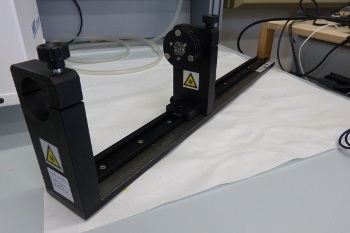This website uses cookies so that we can provide you with the best user experience possible. Cookie information is stored in your browser and performs functions such as recognising you when you return to our website and helping our team to understand which sections of the website you find most interesting and useful. More information in our Privacy Policy
Potentiostat/galvanostat with impedance analyzer and optical bench
Supervisor : Nicola Sangiorgi, Felice Carlo Simeone
The electrochemical working station is able to perform a wide range of electrochemical experiments. Moreover, photo-electrochemical measurements can be done using the dedicated optical bench.
Main characterizations
General electrochemical analyses controlling currents and potentials, electrochemical impedance methods with mathematical and graphical data elaborations, photo-electrochemical measurements with optical bench (IMVS and IMPS tests). Availability of electrode and probe for pH and temperature determination respectively. Dedicated module for fast ramp signal generator to perform specific analyses.
Working mechanism
Different experimental set-up in potentiostatic/galvanostatic mode controlling both current and potential applied with possibility to use modulate signal (impedance) for different electrochemical and photo-electrochemical characterizations.
Potentiostat/galvanostat with impedance analyzer PGSTAT302N+FRA32M and optical bench (Metrohm, Autolab)
• maximum current of ± 2 A and a compliance voltage of ± 30 V
• acquisition card and a fast ramp generator linear analog up to 250KV/second
• FRA system (frequencies between 1MHz and 10μHz in potentiostatic/galvanostatic mode and 30MHz on inputs/outputs)
• Availability of electrode for pH measurement and a probe for temperature control
• optical bench with a support for a photodiode detector and sample holder. Seven different interchangeable LED for different wavelengths (red, orange, amber, green, cyan, blue)
• Availability of different working and reference electrodes
A boosted-up version of the AUTOLAB unit is also available, employing the Metrohm AUTOLAB 20 A current booster, allowing high power electrochemical three-electrode or two-electrode measurements to be carried out, at cell currents up to 20 A and cell voltages up to 20 V.

